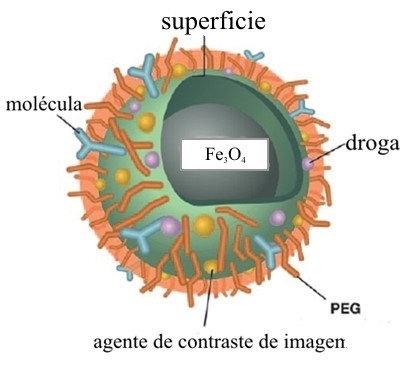Progresos en la preparación de nanopartículas magnéticas multifuncionales para aplicación en la medicina
DOI:
https://doi.org/10.33017/RevECIPeru2013.0014/Keywords:
Nanoparticles, magnetiteAbstract
In this paper we review three routes of synthesis of nanoparticles of magnetite (Fe3O4) functionalized to be used to transport drugs. These non- toxic particles, are undoubtedly one of the major responsible for the advance in medical treatment against tumors, targeted drug delivery, immobilization of enzymes, RNA and DNA purification, disease diagnosis using magnetic resonance imaging, dial stem cells, etc. For application the particles must be coated with a biologically active material. Thus magnetite nanoparticles were synthesized by chemical coprecipitation method using various aqueous chemical solutions of FeCl2.4H2O, FeCl3. 6H2O and FeSO4.7H2O mixing in certain proportions. These mixtures were precipitated with NaOH and NH4OH. The surface was treated with an aqueous solution of Fe (NO3)3.9H2O to obtain magnetite nanoparticles with electric double layer. The functionalization was carried out with pure oleic acid, other fatty acids derived from vegetable oils, and other chitosan -coated gold. Another preparation was made by dissolving Fe3O4, FeCl3 and Na2SO3 in water to form a solution and then oleic acid was added as a surfactant. This solution was precipitated with NaOH. The obtained nanoparticles were of a particle diameter of 5, 7 and 10 nm as observed by transmission electron microscopy and X - ray diffraction. The magnetic properties were studied by Mossbauer spectroscopy and magnetization measurements in the range of 4.2 -250K. The saturation magnetization (Ms) was 3, 4 and 5.5 emu/g in the samples and coercivities of 30, 80 and 150 Oe. The low value of saturation magnetization was attributed to non- colinearity of the spins at the surface of the particles. Magnetization measurements of the constant magnetic anisotropy energy (K) was obtained with values of 1.6×104, 2 ×104 and 2.3 ×104 J/m3 for the samples. Fe3O4 spectra at room temperature showed a line due to the superparamagnetic relaxation and two sextets at low temperature. The shape of the line in Mössbauer spectra vary with temperature and were simulated using a two-level model (spin ½) of superparamagnetic relaxation and stochastic theory. He took into account that the size distribution of the particles obeys a log- normal distribution. The particles were used to carry drugs obtained from plant extracts from the Amazon with antitumor and anti-inflammatory properties


